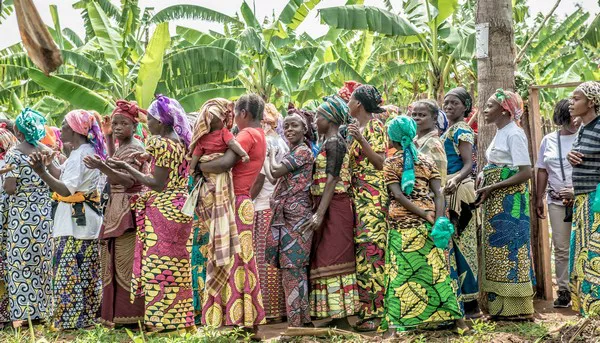In our interconnected world, progress and development are benchmarks by which nations are often evaluated. However, disparities persist, and certain regions continue to grapple with significant challenges hindering their advancement. Despite efforts towards global prosperity, several countries face multifaceted issues that impede their socio-economic growth. This article aims to shed light on the ten most backward countries in the world, examining the factors contributing to their status and potential pathways for improvement.
10 Most Backward Countries in the World
1. Democratic Republic of the Congo (DRC):
Situated in Central Africa, the Democratic Republic of the Congo grapples with a myriad of challenges, despite its abundant natural resources. Political instability, armed conflict, corruption, and weak governance have plagued the country for decades, exacerbating poverty and hindering development efforts. Additionally, inadequate infrastructure and healthcare systems further contribute to its backwardness, perpetuating a cycle of poverty and underdevelopment.
2. Yemen:
Yemen, located in the Middle East, faces one of the world’s most severe humanitarian crises. Years of internal conflict, exacerbated by external interventions, have devastated the country’s infrastructure and economy. Widespread poverty, food insecurity, and lack of access to basic services have left millions of Yemenis in dire need of assistance. The ongoing conflict continues to impede humanitarian efforts and exacerbate the country’s backwardness.
3. Haiti:
In the Caribbean, Haiti grapples with deep-rooted socio-economic challenges, including political instability, poverty, and environmental degradation. Rampant corruption, inadequate infrastructure, and a fragile healthcare system further exacerbate its struggles. Despite international aid and efforts to promote stability, Haiti continues to face significant obstacles on the path to development.
4. Afghanistan:
Afghanistan’s turbulent history, marked by decades of conflict and instability, has impeded its progress and development. The country faces persistent security challenges, widespread poverty, and a weak infrastructure, hindering efforts to improve the lives of its citizens. Additionally, Afghanistan struggles with issues such as access to education, particularly for girls, and healthcare services in remote areas.
5. South Sudan:
As one of the world’s youngest nations, South Sudan faces daunting challenges in its quest for stability and development. Years of civil war, ethnic tensions, and political instability have hindered progress and exacerbated humanitarian crises. The country’s infrastructure is underdeveloped, and access to basic services remains limited, perpetuating cycles of poverty and underdevelopment.
6. Central African Republic (CAR):
The Central African Republic grapples with chronic instability, violence, and political unrest, hampering its efforts to achieve sustainable development. Conflict between armed groups, coupled with weak governance and a lack of infrastructure, has left many citizens vulnerable to poverty and insecurity. Rebuilding efforts are hindered by ongoing violence and a struggling economy, exacerbating the country’s backwardness.
7. Niger:
Niger, located in West Africa, faces significant challenges related to poverty, food insecurity, and underdevelopment. Limited access to education and healthcare, coupled with environmental pressures such as desertification, further exacerbate its struggles. Despite efforts to promote economic growth and improve living conditions, Niger continues to grapple with systemic barriers to development.
8. Mali:
Mali confronts a complex array of challenges, including political instability, ethnic tensions, and terrorism. These factors have hindered efforts to promote economic growth and alleviate poverty, particularly in rural areas. Access to education and healthcare remains limited, perpetuating cycles of underdevelopment and hindering progress towards stability and prosperity.
9. Chad:
Chad faces numerous obstacles to development, including political instability, poverty, and environmental degradation. Weak governance, coupled with internal conflicts and regional instability, have hampered efforts to address socio-economic challenges effectively. Limited access to education and healthcare further exacerbates the country’s struggles, hindering its prospects for sustainable development.
10. Sierra Leone:
Sierra Leone, in West Africa, continues to grapple with the legacy of a brutal civil war and the challenges of post-conflict reconstruction. Despite progress in some areas, such as governance and economic reforms, the country faces significant hurdles in providing basic services to its citizens. Access to education and healthcare remains limited, and widespread poverty persists, hindering efforts to achieve lasting development.
See Also: Top 11 Countries With The Most Lakes In The World
Conclusion:
The ten countries highlighted in this article face multifaceted challenges that hinder their progress and development. From political instability and conflict to poverty and weak infrastructure, these nations confront a range of obstacles that perpetuate cycles of underdevelopment. However, amid these challenges, there is hope. International cooperation, targeted aid, and sustainable development initiatives can play a crucial role in addressing the root causes of backwardness and fostering positive change. By understanding the complexities of each situation and working together towards viable solutions, we can help pave the way for a brighter future for all.
You Might Be Interested In:



























